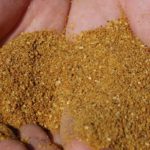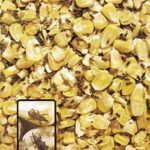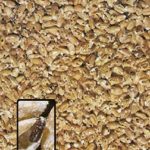Canada
On August 27, 2015, the Canadian Pest Management Regulatory Agency (PMRA) published their Re-evaluation Decision Document for the continued registration of phosphine and metal phosphide fumigants. This initial decision included several mitigation measures that would have effectively made continued use of these products impossible. Among these key mitigation measures were:
- A minimum buffer zone of 50 meters must be established for fumigation sites.
- A minimum buffer zone of 200 meters must be established for difficult to evaluate sites. These sites include schools, daycare centers, nursing homes, assisted living facilities, hospitals, inpatient clinics, and prisons.
- With respect to rodent burrow treatment on farms, burrows must be located 50 meters from buildings that are, or may be occupied by humans, and/or domestic animals, and under the control of the owner/operator
of the application site; otherwise a 500-meter buffer zone around fumigated burrows is applicable. - The minimum buffer zone of 50 meters is not required for ships and railcars that are in motion. However, the buffer zone must be established for stationary ships in Canadian waters, ports and harbors, as well as for fumigated railcars while located at rail terminals and for any prolonged stops en route.
- Applicators must continually monitor hydrogen phosphide (phosphine) gas levels at several locations along the buffer zone perimeter. If hydrogen phosphide gas concentrations approach the limit restriction of 0.1 ppm, the applicator must take appropriate action such as extending the size of the buffer zone.
In response, the Phosphine Producers Association (PPA), in cooperation with other affected stakeholders, filed letters of objection with the Agency citing a number of arguments, including that their decision was premature in that air monitoring data was currently being collected, and that the Agency had not properly considered the balance between the risk of using these products and their value to agriculture and trade. On August 29, 2016, the PPA submitted the data gathered in the course of the air monitoring study. Separate air monitoring data were also submitted by the Canadian Grains Council. Based on the submitted data, the PMRA agreed to revise their Re-Evaluation Decision. Key changes which will balance the needs of industry
while addressing PMRA’s concerns include:
- Fumigation Zones, determined by the licensed fumigator and based on actual monitored concentrations,will be established during the fumigation and aeration periods of a fumigation treatment.
- Respiratory protection requirements were revised to require the use of personal hydrogen phosphide monitors or an air-purifying respirator even when concentrations are below 0.1 ppm.
- The certified applicator must be present during aeration until the concentration of phosphine is at or below the exposure limit (0.1 ppm).
- In facilities or agricultural establishments, all employees who are or will be present at the facility during
product use, MUST complete mandatory annual training using product-specific training material, as well as facility-specific information. Distributors must provide a training guideline and Fumigation Management Plan (FMP) template when the product is sold. The fumigated facility and the certified applicator are responsible for training on-site persons.
The registrants have submitted amended Labels and Applicator’s Manuals for PMRA review. At this time, Phostoxin Pellets and Tablets, as well as Fumitoxin Pellets, have been approved.
USA
On September 25, 2013, the US EPA announced in the Federal Register the opening of the docket and public comment period on the Registration Review of phosphine and the metal phosphide fumigants. Over the course of the 60-day public comment period, a total of 17 comments were generated from the registrants, industry groups, distributors, end users, and others. On March 20, 2014, the US EPA published their Final Work Plan; and on August 6, 2014, issued a Data Call-In (DCI). The status of the requested studies in the DCI is charted below:
Honeybee acute vapor exposure – Two studies were submitted to EPA on October 5, 2015. No feedback regarding these studies has been received from the Agency.
Acute inhalation toxicity study – A rangefinder study has been completed and the final report was submitted to EPA on August 28, 2017. The PPA is awaiting feedback from EPA on the proposed design for the main study.
Avian inhalation toxicity – The study was initiated on October 10, 2017. Results are currently in draft review.
Terrestrial plant toxicity (vegetative vigor) – A draft protocol for the terrestrial plant toxicity study was submitted to EPA for review on May 3, 2016. The in-life phase of the study is scheduled for completion in June 2018.
Product use information – Information submitted to EPA on July 13, 2017.
Ambient air monitoring – A waiver request was submitted to EPA on October 28, 2016. No comments from the Agency have been received.
Inhalation exposure – A waiver request was submitted to EPA on October 28, 2016. No comments from the Agency have been received.
Inhalation exposure – indoor – A waiver request was submitted to EPA on October 28, 2016. No comments from the Agency have been received.
Monitoring data on fumigated commodities – The PPA cited existing data to satisfy this requirement on October 28, 2016. No comments from the Agency have been received.
Extended one-generation reproduction study – Study protocols for the extended one-generation reproduction study were submitted to EPA on August 22, 2017. The PPA is awaiting feedback.



